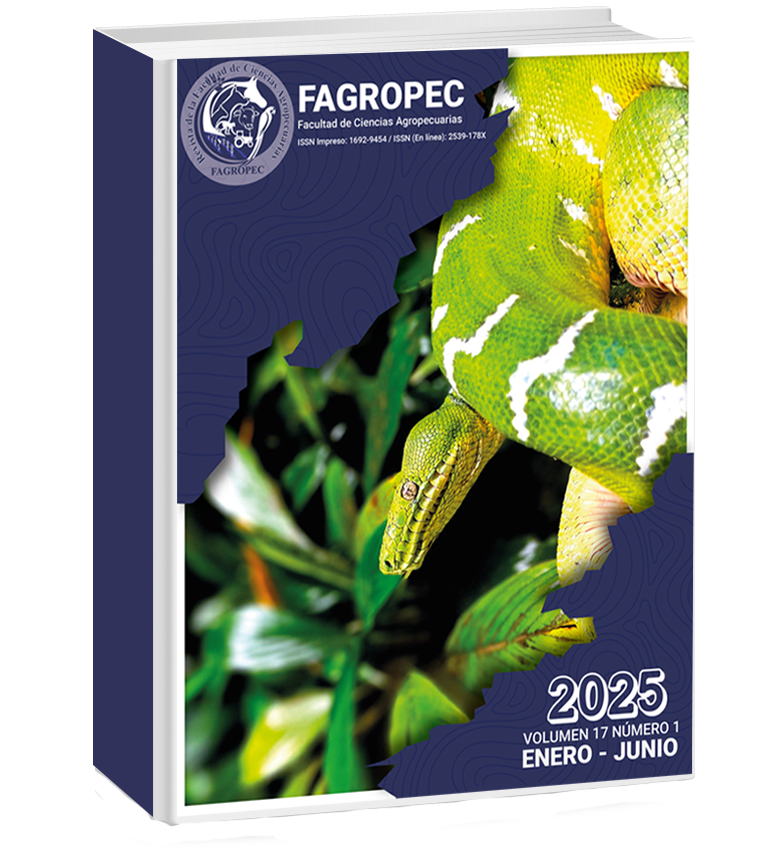The epidemiological behaviour of ophidian accidents in the Department of Caquetá, Colombia (2015–2019)
DOI:
https://doi.org/10.47847/fagropec.v17n1a5Keywords:
snake bite accident, epidemiology, snakes, public healthAbstract
The ophidian accident is defined as a tissue injury caused by snake bite, becoming a public health problem at departmental, national and global level, denoting a close relationship with agricultural activity. The objective is to analyze ophidian accidents in humans between the periods from 2015 to 2019 in the department of Caquetá to strengthen the exercises that promote prevention in ophidian accidents justified in the epidemiological characteristics belonging to the region. A descriptive and retrospective study was conducted by analyzing the information collected on ophidian accidents in the databases of the Public Health System (SIVIGILA) and the Secretary of Health of the Department of Caquetá in the periods from 2015 to 2019. There were 1289 cases of ophidian accidents, prevailing male sex 74.6%, with higher incidence in the ages of 21-40 years 39.9%, in agricultural activities 53.7%. The Bothrops genus is the one that produces the highest number of ophidian accidents with 73.8%. This study has identified the epidemiological status of ophidian accidents in the department of Caquetá.
Downloads
References
Anderson, G., Montealegre, C., Eduardo, J., & Lozada, G. (n.d.). CAMBIO CONCEPTUAL EN ESTUDIANTES DEL DEPARTAMENTO DEL TOLIMA FRENTE AL CONOCIMIENTO BIOLÓGICO DE SERPIENTES, PREVENCIÓN Y PRIMEROS AUXILIOS ANTE EL ACCIDENTE OFÍDICO, A PARTIR DE UNA PROPUESTA DE EDUCACIÓN AMBIENTAL ENFOCADA AL APRENDIZAJE BASADO EN PROBLEMAS.
Andrés, J., Córdoba, D., & Jaramillo Orjuela, V. (n.d.). INCIDENCIA Y DESCRIPCIÓN GEOGRÁFICA DE ACCIDENTES OFÍDICOS EN COLOMBIA REPORTADOS AL SISTEMA NACIONAL DE VIGILANCIA EN.
Azuara Antonio, O., Ortiz, M. I., Mateos Mauricio, F. A., Madrigal Anaya, J. del C., & Hernández-Ramírez, L. (2024). Fisiopatología de Accidente Ofídico por Bothrops (Bothrópico). Educación y Salud Boletín Científico Instituto de Ciencias de La Salud Universidad Autónoma Del Estado de Hidalgo, 12(24), 40–46. https://doi.org/10.29057/icsa.v12i24.12330
Boletín Epidemiológico Semanal Semana Epidemiológica. (n.d.).
Chippaux, J. P. (2008). Estimating the global burden of snakebite can help to improve management. In PLoS Medicine (Vol. 5, Issue 11, pp. 1538–1539). https://doi.org/10.1371/journal.pmed.0050221
Coto Freund, F., Murillo Barquero, F., & Rocha Monge, S. M. (2022a). Accidente ofídico. Revista Medica Sinergia, 7(2), e756. https://doi.org/10.31434/rms.v7i2.756
Coto Freund, F., Murillo Barquero, F., & Rocha Monge, S. M. (2022b). Accidente ofídico. Revista Medica Sinergia, 7(2), e756. https://doi.org/10.31434/rms.v7i2.756
Dayasiri, K., Gunarathna, G., Gawarammana, I., & Jayamanne, S. (2025). Preventive practices and parental attitudes towards snakebites in children in snakebite hotspots of rural Sri Lanka. BMJ Paediatrics Open, 9(1), e003543. https://doi.org/10.1136/bmjpo-2025-003543
Edwin Prieto Alvarado, F. (n.d.). LINEAMIENTOS NACIONALES PARA LA VIGILANCIA 2022 INSTITUTO NACIONAL DE SALUD. INS.
En, R., Pública, S., & León Nuñez, L. J. (2014). PROCESO VIGILANCIA Y ANALISIS DEL.
Erazo-Martínez, V., Posso-Osorio, I., Ruiz-Ordoñez, I., Castro-Herrera, F., Castaño-Valencia, S., Delgado-Mora, T., & Cañas, C. A. (2024). Viperidae snake envenomation from a highly complex hospital in southwestern Colombia. Heliyon, 10(5). https://doi.org/10.1016/j.heliyon.2024.e26768
García J., A. F., Bedoya H., R. G., Montoya G., M. A., Rodríguez, C. A., & Zuluaga, A. F. (2017). Caracterización de los casos de accidente ofídico atendidos por el Centro de Información y Estudio de Medicamentos y Tóxicos (CIEMTO) de Medellín, Colombia durante 2016. Revista de La Universidad Industrial de Santander. Salud, 49(3), 450–457. https://doi.org/10.18273/revsal.v49n3-2017003
Gómez Cardona, J. P., Gómez Cabal, C., & Gómez Cabal, M. L. (2017). Sueros antiofídicos en Colombia: análisis de la producción, abastecimiento y recomendaciones para el mejoramiento de la red de producción. Biosalud, 16(2), 96–116. https://doi.org/10.17151/biosa.2017.16.2.9
Gopal, G., Muralidar, S., Prakash, D., Kamalakkannan, A., Indhuprakash, S. T., Thirumalai, D., & Ambi, S. V. (2023). The concept of Big Four: Road map from snakebite epidemiology to antivenom efficacy. In International Journal of Biological Macromolecules (Vol. 242). Elsevier B.V. https://doi.org/10.1016/j.ijbiomac.2023.124771
Gordo, L. C. C., Orozco, B. A., Goenaga, G. O., Ortiz, Y. M. B., & Otálvaro, J. P. (2016). Epidemiological behavior of ophidean accidents in the department of Magdalena, Colombia (2009-2013). Revista Ciencias de La Salud, 14(2), 161–177. https://doi.org/10.12804/revsalud14.02.2016.02
Maguiña-Vargas, C., Chincha-Lino, O., Vilcapoma-Balbín, P., & Morante, D. (2020). Actualización en clínica y terapia de mordedura de serpiente (ofidismo). Revista Médica Herediana, 31(1), 48–55. https://doi.org/10.20453/rmh.v31i1.3729
María, A., Bárcenas, R., Etv-Zoonosis, E., & Transmisibles, G. (n.d.). Página 2 de 33 INFORME DE EVENTO ACCIDENTE OFÍDICO, COLOMBIA, 2018.
Mateus Fontecha, A. M., Rubiano Sánchez, C. J., Ríos Tinoco, I. P., Vacca Carvajal, B. F., Vargas Rodríguez, L. J., García Agudelo, L., & Noguera Fonseca, J. (2024). Caracterización de los pacientes atendidos con accidente ofídico en el Hospital Regional de la Orinoquía. Revista Repertorio de Medicina y Cirugía, 33(3), 283–287. https://doi.org/10.31260/RepertMedCir.01217372.1355
Pereañez, J. A., Preciado, L. M., & Rey-Suárez, P. (2023). Knowledge about Snake Venoms and Toxins from Colombia: A Systematic Review. In Toxins (Vol. 15, Issue 11). Multidisciplinary Digital Publishing Institute (MDPI). https://doi.org/10.3390/toxins15110658
Pucca, M. B., Knudsen, C., Oliveira, I. S., Rimbault, C., Cerni, F. A., Wen, F. H., Sachett, J., Sartim, M. A., Laustsen, A. H., & Monteiro, W. M. (2020). Current Knowledge on Snake Dry Bites. In Toxins (Vol. 12, Issue 11). MDPI. https://doi.org/10.3390/toxins12110668
Sevilla-Sánchez, M. J., Ayerbe-González, S., & Bolaños-Bolaños, E. (2021a). Biomedical and epidemiological aspects of the accident for snakebite in the department of Cauca, Colombia (2009 - 2018). Biomedica, 41(2), 1–62. https://doi.org/10.7705/biomedica.5853
Sevilla-Sánchez, M. J., Ayerbe-González, S., & Bolaños-Bolaños, E. (2021b). Biomedical and epidemiological aspects of the accident for snakebite in the department of Cauca, Colombia (2009 - 2018). Biomedica, 41(2), 1–62. https://doi.org/10.7705/biomedica.5853
Shrestha, G., Dhungana, R., Neupane, A., Pokharel, A., & Rajbhandari, S. (2023). An ischemic complication of a snake bite: Case report. International Journal of Surgery Case Reports, 112. https://doi.org/10.1016/j.ijscr.2023.108962
Sreekumar, A., Abraham, S. V., Rajeev, P. C., Chanchal A. B, V., Suseel, A., Mathew, D., George, C. R., & Palatty, B. U. (2025a). Educating healthcare workers in snakebite management: A study to determine the effectiveness of the snake bite life support workshop. Toxicon, 255. https://doi.org/10.1016/j.toxicon.2025.108235
Sreekumar, A., Abraham, S. V., Rajeev, P. C., Chanchal A. B, V., Suseel, A., Mathew, D., George, C. R., & Palatty, B. U. (2025b). Educating healthcare workers in snakebite management: A study to determine the effectiveness of the snake bite life support workshop. Toxicon, 255. https://doi.org/10.1016/j.toxicon.2025.108235
Urieles Sierra, K. (n.d.). INFORME DE EVENTO ACCIDENTE OFÍDICO, COLOMBIA, 2020 1. INTRODUCCIÓN.
Walteros Profesional especializado Andrea Paredes, D., José León Núñez Martha Lucía Ospina Martínez, L., Edwin Prieto Alvarado, F., Eduardo Pacheco García, Ó., & Quijada Bonilla, H. (n.d.). Pág. 2 DOCUMENTO ELABORADO POR.
Youngman, N. J. (2025). Snake Venom: Toxicology and Associated Countermeasures. In Toxins (Vol. 17, Issue 5). Multidisciplinary Digital Publishing Institute (MDPI). https://doi.org/10.3390/toxins17050237
Downloads
Published
Issue
Section
License

This work is licensed under a Creative Commons Attribution-NonCommercial-ShareAlike 4.0 International License.
























